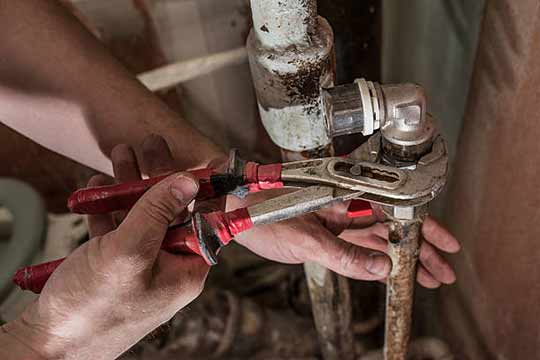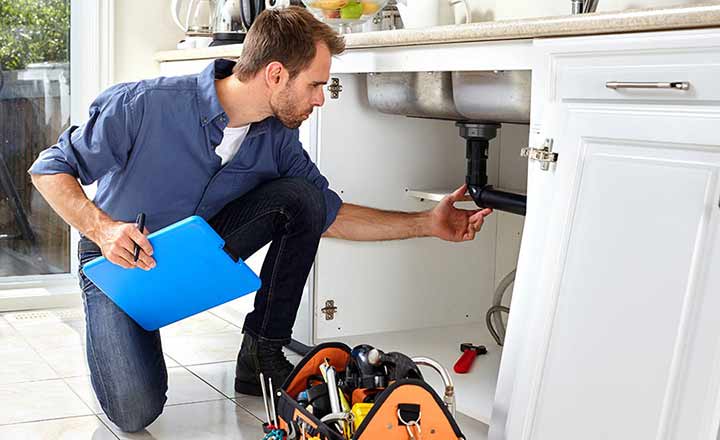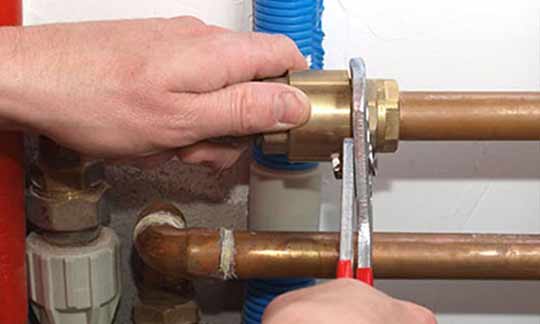
Older homes, with their distinct character and charm, often come with a unique set of plumbing challenges that require careful attention and maintenance. Unlike modern homes, which are equipped with the latest plumbing technologies, older residences may have outdated systems that can lead to a variety of issues. These challenges can range from corroded pipes and outdated materials to inefficient water flow and potential water damage. Understanding these unique challenges is the first step in navigating the complexities of plumbing in older homes.
The allure of older homes often lies in their architectural beauty and historical significance. However, beneath their appealing facade, these homes may host plumbing systems that have not been updated in decades. The materials used in older plumbing systems, such as galvanized steel or cast iron, are prone to corrosion and deterioration over time. This can lead to leaks, blockages, and even structural damage if not addressed promptly. Furthermore, the design of older plumbing systems may not accommodate modern water usage demands, leading to issues such as low water pressure and inefficient drainage.
The Importance of Regular Plumbing Inspections: Ensuring Long-Term System Integrity
One of the most effective ways to prevent costly repairs in older homes is through regular plumbing inspections. These inspections are crucial in identifying potential issues before they escalate into major problems. A thorough inspection will assess the condition of pipes, check for leaks, and evaluate the overall efficiency of the plumbing system. By conducting regular inspections, homeowners can address minor issues promptly, preventing them from becoming expensive repairs in the future.
Regular plumbing inspections serve as a preventive measure, akin to routine health check-ups. They allow homeowners to gain a comprehensive understanding of the current state of their plumbing system, identifying vulnerabilities that could lead to future problems. Professional plumbers can use specialized tools, such as video cameras, to inspect the interiors of pipes and identify hidden leaks or blockages. By doing so, homeowners can make informed decisions about necessary repairs or upgrades, ultimately extending the lifespan of their plumbing system and safeguarding their property from water damage.
Identifying Common Plumbing Issues in Older Homes: Recognizing and Addressing Potential Pitfalls
Older homes are prone to a variety of plumbing issues that can lead to significant damage if not addressed promptly. Common problems include leaky pipes, clogged drains, and low water pressure. Leaking pipes, often caused by corrosion or wear and tear, can lead to water damage and mold growth. Clogged drains, resulting from debris buildup over time, can cause slow drainage and potential backups. Low water pressure, often due to mineral deposits or pipe obstructions, can affect the efficiency of water flow throughout the home.
Another prevalent issue in older homes is outdated plumbing fixtures that may not meet current efficiency standards. These fixtures can lead to excessive water usage and higher utility bills. Additionally, older homes may have sewer lines that are susceptible to root intrusion or collapse, leading to sewage backups and unpleasant odors. Identifying these common issues early on allows homeowners to take proactive measures to mitigate their impact, ensuring a more comfortable and functional living environment.
Preemptive Maintenance Tactics for Plumbing Systems: Proactive Approaches to Avoid Costly Repairs
To effectively manage plumbing challenges in older homes, implementing preemptive maintenance tactics is essential. One such tactic is regularly cleaning and maintaining drains to prevent clogs and ensure efficient water flow. Additionally, homeowners should consider upgrading outdated plumbing fixtures and materials to improve the overall performance of the system. Replacing old galvanized pipes with modern alternatives like copper or PVC can significantly reduce the risk of leaks and corrosion.
Preemptive maintenance involves a combination of routine inspections, timely repairs, and strategic upgrades. Homeowners should establish a maintenance schedule that includes regular checks of all visible plumbing components, such as faucets, toilets, and exposed pipes. Promptly addressing any signs of wear, such as dripping faucets or slow-draining sinks, can prevent minor issues from escalating into major problems. Moreover, investing in modern plumbing technologies, such as water-efficient appliances and smart leak detection systems, can enhance the overall efficiency and reliability of the plumbing system.
Upgrading Plumbing Fixtures and Materials: Enhancing Efficiency and Reliability
Upgrading plumbing fixtures and materials in older homes can greatly enhance the efficiency and reliability of the plumbing system. Modern fixtures are designed to conserve water and improve performance, making them a valuable investment for homeowners. Replacing old faucets, showerheads, and toilets with water-saving models can reduce water consumption and lower utility bills. Additionally, upgrading to newer materials such as PEX piping can offer improved durability and flexibility compared to traditional materials.
When upgrading plumbing fixtures, homeowners should prioritize those that offer the greatest efficiency gains. WaterSense-labeled products, for example, are designed to use at least 20% less water than standard models without compromising performance. Similarly, replacing old water heaters with energy-efficient models can result in significant energy savings. By investing in modern plumbing fixtures and materials, homeowners can enjoy improved water efficiency, reduced maintenance needs, and enhanced comfort in their older homes.
Addressing Water Pressure Issues in Older Homes: Solutions for Enhanced Water Flow
Low water pressure is a common issue in older homes that can affect daily activities such as showering and washing dishes. To address this problem, homeowners should first check for any obstructions or leaks in the plumbing system. Cleaning aerators and showerheads can also help improve water flow. In some cases, installing a pressure booster pump may be necessary to enhance water pressure throughout the home. By addressing water pressure issues, homeowners can ensure a more comfortable and efficient living environment.
Water pressure issues can arise from a variety of factors, including corroded pipes, mineral buildup, or inadequate municipal supply pressure. Homeowners should start by identifying the root cause of the problem. If mineral deposits are suspected, descaling agents can be used to dissolve buildup in pipes and fixtures. For more persistent issues, professional plumbers can conduct pressure tests to diagnose the underlying cause and recommend appropriate solutions. By taking targeted actions to address water pressure issues, homeowners can restore optimal water flow and improve the overall functionality of their plumbing system.

Homeowners can mitigate corrosion risks by ensuring that their water supply is properly treated and free from corrosive elements.
Preventing and Managing Pipe Corrosion: Strategies for Long-Lasting Plumbing Systems
Pipe corrosion is a significant concern in older homes, as it can lead to leaks, water damage, and costly repairs. To prevent corrosion, homeowners should regularly inspect pipes for signs of rust or discoloration. Applying protective coatings or using corrosion-resistant materials can help extend the lifespan of pipes. If corrosion is already present, replacing affected sections with new piping is often the best solution. By taking proactive measures to prevent and manage pipe corrosion, homeowners can protect their plumbing system and avoid expensive repairs.
Corrosion is often accelerated by factors such as water quality, pipe material, and environmental conditions. Homeowners can mitigate corrosion risks by ensuring that their water supply is properly treated and free from corrosive elements. Additionally, installing dielectric unions between dissimilar metals can prevent galvanic corrosion. For homes with extensive corrosion damage, repiping your home with modern materials such as copper or PEX may be necessary. By implementing these strategies, homeowners can preserve the integrity of their plumbing system and minimize the risk of leaks and water damage.
Dealing with Sewer Line Issues: Maintaining a Healthy and Functional System
Sewer line issues are another common challenge in older homes, often caused by tree root intrusion, pipe deterioration, or blockages. These issues can lead to unpleasant odors, slow drainage, and potential sewage backups. Regular sewer line inspections and maintenance can help identify and address problems early on. In some cases, trenchless sewer repair techniques can be used to fix damaged lines without extensive excavation. By staying vigilant and proactive, homeowners can effectively manage sewer line issues and maintain a healthy plumbing system.
Sewer line maintenance is crucial for preventing costly and disruptive problems. Homeowners should schedule regular inspections with a professional plumber to assess the condition of their sewer lines and identify any potential issues. If tree roots are a concern, root barriers or chemical root inhibitors can be used to prevent intrusion. For minor blockages, hydro jetting may be employed to clear debris and restore proper flow. By taking a proactive approach to sewer line maintenance, homeowners can avoid unpleasant surprises and ensure the continued functionality of their plumbing system.
Implementing Water Conservation Strategies: Promoting Sustainability and Efficiency
Water conservation is an important consideration for homeowners looking to improve the efficiency of their plumbing systems. Implementing water-saving strategies can reduce water usage and lower utility bills. Simple measures such as fixing leaks promptly, installing low-flow fixtures, and using water-efficient appliances can make a significant difference. Additionally, educating household members about water conservation practices can further enhance efforts to reduce water consumption in older homes.
Water conservation is not only beneficial for reducing costs but also for promoting environmental sustainability. Homeowners can start by conducting a water audit to identify areas where usage can be reduced. Installing rainwater harvesting systems or greywater recycling systems can further enhance water efficiency. Additionally, landscaping with native plants that require minimal watering can contribute to overall water conservation efforts. By adopting these strategies, homeowners can reduce their environmental footprint and promote a more sustainable lifestyle.
To Sum It Up
Navigating plumbing challenges in older homes requires a proactive and informed approach. By understanding the unique issues that older residences face, homeowners can implement effective maintenance tactics to prevent costly repairs. Regular inspections, upgrading fixtures and materials, and addressing common problems such as low water pressure and pipe corrosion are essential steps in maintaining a reliable plumbing system. With careful attention and preemptive measures, homeowners can enjoy the charm of their older homes while ensuring a functional and efficient plumbing system.
Ultimately, the key to managing plumbing challenges in older homes lies in a commitment to regular maintenance and a willingness to invest in necessary upgrades. Homeowners who take the time to understand their plumbing system’s unique needs and implement proactive solutions will be rewarded with a reliable and efficient system that enhances the comfort and value of their home. By embracing these strategies, homeowners can preserve the historical charm of their older homes while enjoying the benefits of modern plumbing technology.


